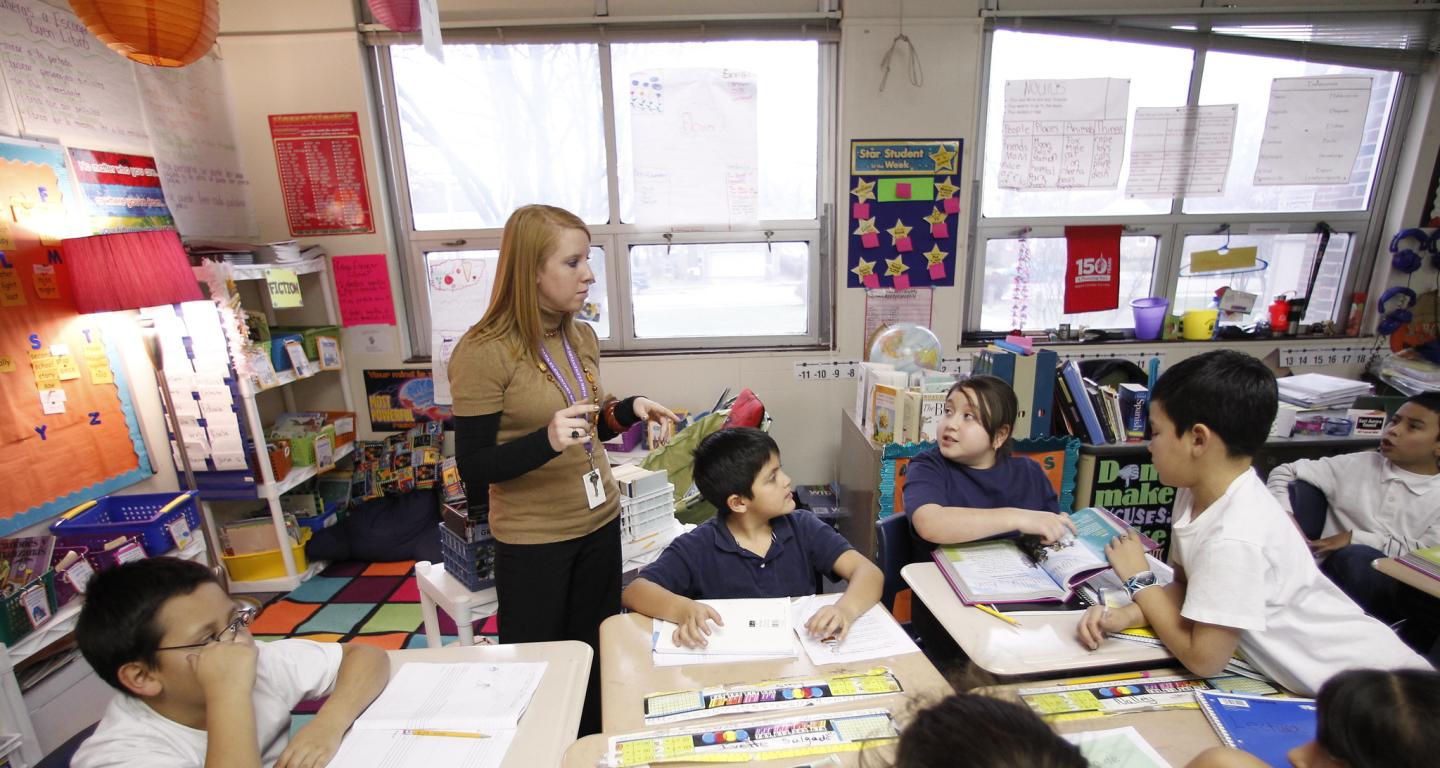A Comprehensive Guide to the Numerous Discovering Techniques in Key Scientific Research Direction
The exploration of varied discovering methods in main science direction provides a possibility for educators to improve trainee interaction and comprehension substantially. By checking out hands-on understanding methods, inquiry-based methods, and collective strategies, we can recognize reliable methods that provide to different finding out styles.

Hands-On Learning Strategies
Hands-on learning strategies play a pivotal function in key science direction, involving students in energetic expedition and experimentation. These methods enable learners to communicate straight with products and phenomena, promoting a much deeper understanding of clinical principles. By utilizing manipulatives, models, and real-life experiments, teachers produce an environment where pupils can observe, assume, and evaluate their ideas.
Such techniques not just improve comprehension however likewise cultivate vital reasoning and analytical abilities. When trainees join activities like developing simple equipments, growing seeds, or conducting chain reactions, they are encouraged to ask inquiries and seek answers through their very own monitorings. This experiential approach aids to debunk complicated scientific principles, making them more relatable and accessible.
Additionally, hands-on discovering advertises collaboration among peers, as trainees commonly work in groups to carry out experiments or share searchings for. This teamwork not just enhances their discovering experience yet also develops necessary social skills. Inevitably, integrating hands-on techniques in primary science guideline promotes a long-lasting love of discovering and interest concerning the all-natural world, laying a solid foundation for future scholastic searches in scientific research and beyond.
Inquiry-Based Learning
Inquiry-based discovering is an instructional strategy that motivates pupils to ask concerns, check out sensations, and build their own understanding of clinical concepts. This method changes the focus from conventional teacher-led instruction to a more student-centered experience, where learners take the campaign in their educational trip. By promoting interest, inquiry-based discovering advertises deeper interaction with the product, allowing pupils to explore subjects in a meaningful context.
In practice, this method frequently includes hands-on experiments, observations, and crucial thinking tasks that align very closely with the clinical method. Pupils are motivated to formulate hypotheses, design examinations, and evaluate data, which cultivates necessary abilities such as logical and analytic reasoning. The function of the teacher in this structure is to assist in expedition, assisting pupils via the questions process while encouraging independent thought and cooperation.
Additionally, inquiry-based understanding supports a feeling of possession over the learning procedure, motivating pupils to seek understanding proactively. This method not just enhances understanding of scientific ideas however also promotes a lifelong love for understanding, gearing up pupils with the skills essential to navigate an increasingly intricate world.
Collaborative Knowing Approaches
Collective learning techniques empower pupils to involve in significant interactions with peers, cultivating a common duty for their educational results. In primary scientific research guideline, these approaches encourage students to interact to explore clinical principles, address problems, and perform experiments (primary science tuition Singapore). By taking part in group activities, students can leverage diverse point of views, allowing for richer understanding and retention of scientific knowledge
One trick element of joint understanding is the focus on communication abilities. Pupils need to articulate their thoughts, primary science tuition Singapore listen proactively to others, and work out concepts, all of which are crucial proficiencies in both real-world and scholastic contexts. This social communication not just enhances their understanding of clinical concepts however also advertises teamwork and problem resolution abilities.
When pupils see the worth of their contributions within a team, they are a lot more most likely to take possession of their learning journey. In general, incorporating joint understanding approaches in key science direction grows a dynamic understanding atmosphere that prepares trainees for future academic and social challenges.
Innovation Combination in Science
The assimilation of modern technology in main scientific research direction boosts finding out experiences by offering ingenious devices and resources that support numerous teaching methodologies, including collaborative knowing - primary science tuition Singapore. Making use of digital systems, simulations, and interactive applications enables students to involve deeply with scientific concepts, promoting an extra hands-on approach to discovering
Online laboratories, for example, allow students to carry out experiments safely and successfully, advertising inquiry-based discovering. These tools can simulate real-world scientific scenarios, allowing trainees to visualize complicated processes that would be tough to duplicate in a standard class setting. Additionally, modern technology fosters communication and cooperation among trainees, as they can share findings and collaborate on projects through on-line platforms.
Additionally, multimedia discussions and educational video clips can improve lessons by catering to diverse knowing designs, making abstract principles extra accessible. Information evaluation tools additionally encourage trainees to collect and translate clinical anchor information, reinforcing essential assuming skills. Overall, the tactical consolidation of technology in primary science direction not only boosts interaction but additionally prepares pupils for a highly advanced culture, outfitting them with necessary abilities for future clinical undertakings.
Separated Direction Techniques
Distinguished instruction strategies are important for attending to the varied demands of learners in primary scientific research education. These methods make it possible for educators to tailor their mentor methods to fit differing capacities, passions, and finding out styles within the classroom. By employing distinguished instruction, instructors can produce an inclusive setting that fosters engagement and boosts understanding of scientific concepts.
One efficient strategy is to make use of adaptable organizing, which enables trainees to team up with peers at comparable ability degrees or with varying point of views. This method urges peer knowing and advertises crucial reasoning. In addition, providing choices in assignments can encourage pupils, allowing them to choose projects that resonate with their interests while still satisfying curricular objectives.
Furthermore, including tiered jobs is one more beneficial technique. By developing jobs with varying levels of complexity, teachers can guarantee that all trainees are suitably challenged, no matter their efficiency. Using formative you can try these out assessments to assess recognizing further enables instructors to adjust their training techniques dynamically, ensuring that each learner obtains the support they need.
Eventually, implementing distinguished direction techniques in primary scientific research education and learning not only improves student learning outcomes but additionally grows an enthusiasm for science, preparing students for future scholastic searches.

Conclusion
In summary, efficient main scientific research instruction requires a complex method that includes hands-on discovering, inquiry-based approaches, and collaborative methods. The integration of modern technology and distinguished instruction even more deals with diverse discovering designs, promoting a setting for exploration and critical reasoning. By carrying out these methods, educators can improve student involvement and comprehension, eventually nurturing a lifelong interest for scientific research and query. Such extensive methods are important for creating notified and curious future scientists.
The exploration of diverse learning techniques in primary scientific research guideline provides an opportunity for educators to improve trainee interaction and comprehension dramatically.Hands-on knowing techniques play a critical function in primary science direction, engaging pupils in active expedition and testing.Inquiry-based learning is a training method that urges students to ask concerns, examine sensations, and build their very own understanding of scientific ideas.Joint understanding techniques equip students to involve in meaningful communications with peers, cultivating a shared duty for their educational end results. On the whole, incorporating collective discovering approaches in key science guideline cultivates a dynamic knowing environment that prepares students for future academic and social difficulties.
Comments on “Primary Science Tuition Singapore for Building Confidence in Science”